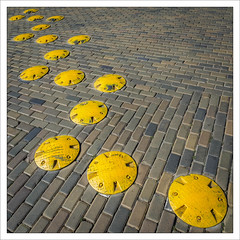A Learners’ View (ALV) Is Of Choices On The Shortest And Fastest Path To Learning, The Oxygen Of Social Life.
Main Article: Abstract
Theme: A learners’ view (ALV) features the science of learning as social processes with the art of teaching as its companion.
 CLASSIC EDUCATION: A LEARNERS’ VIEW (ALV) OF CHOICES DURING TEACHING AND LEARNING sees a minimalist set of options learners use while learning. Minimalism features generics, that is trimmed down, bare minimum categories of options that vary in the likelihood of learning resulting from their selection. This view is grounded in over a century of experimental behavioral and social science research reports.
CLASSIC EDUCATION: A LEARNERS’ VIEW (ALV) OF CHOICES DURING TEACHING AND LEARNING sees a minimalist set of options learners use while learning. Minimalism features generics, that is trimmed down, bare minimum categories of options that vary in the likelihood of learning resulting from their selection. This view is grounded in over a century of experimental behavioral and social science research reports.
Classic education has two kinds of views, a learners’ view (ALV) and other views. From a learners’ view, learning is made up of social processes. Those who teach use ALV when someone learns something from them. At other times, including during lessons while students are not learning, teachers use other views. Minimalism highlights ways to teach efficiently, so learners may accelerate, increase, and deepen (AID) learning.
From ALV, learners make choices at five (5) choice points with a total of 15 sets of options while learning.These choice-points and options appear as commonalities across differences in lessons that result in learning. Commonalities consist of technical, scientific descriptions. As an aggregate, they form what may be called a working language of learning (LANOL), that is, a proof of concept labeled LANOL.
- ALV is grounded in experimental behavioral and social science research. It consists of common procedures and results from over a century of this research in laboratories, classrooms, workshops, and clinical, tutoring sessions.
- ALV sees patterns scientists call facts and screens out other sights, sounds, etc. as noise. These facts describe choices people make while learning the subject matter of lessons of a classic, special, remedial, and other types of education.
- ALV requires no theory or model to use it to accelerate, increase, and deepen (AID) learning.
- From ALV, learners choose if, what, and when to sense something to learn; and teachers choose what, where, when, and how to present lessons to learn.
- When applied, ALV increases accuracy and precision of lessons and of learning.
- ALV provides a way to monetize learning, such as the cost to learn /A/ and to value the extent to which school administration, and other non-lesson activities contribute to that learning.
- ALV vocabulary features names for observable objects, events, and relationships, not words and other symbols based more on speculation, such as cognition, memory, need, understanding, ego, sentiment, motivation, etc.
Learning is connecting two dots, as in finding the straightest and fastest road between two locations on a map.
- Dots consist of vocabulary (some call it symbols or repertoire).
- Connecting dots establishes a relationship (called “meaning” in some theoretical models) among those dots..
- Learning occurs in one-step with two options (correct or incorrect) in three phases (beginning, middle, and end) at four levels (sensory, problem solving, social normality, social values-priorities) with answers to five questions (What is it? What is like it? What is it not and not like it? What comes next? and What is missing?); consists of five (5) choice-points and 15 options.
- Learning solves problems, sometimes called puzzles.
- Learning answers questions, sometimes called problem solving.
Learners use five principles of learning (CEKSS, pronounced “seeks”) to learn. They proceed from:
- Concrete to abstract.
- Easy to heard.
- Known (have done before) to unknown (haven’t done before).
- Simple to heard.
- Specific to general.
Teachers show learners an accepted way to connect two dots.
- Teachers manage the risk of learners failing to learn to connect those dots.
- 1.0 Teachers offer 1.0 Lessons that all learners learn everything in them all of the time.
- Teachers who use ALV on purpose offer lessons that 8 out of 10 or more learners learn.
- 1.0, 0.9, and 0.8 Teachers match instruction to senses learners will likely use while learning.
- Teachers not trying to earn a 1.0 or near to a 1.0 rating ration learning of their students.
Lessons blend (1) choices of teachers to instruct, and of content to (2) choices of learners in order to connect two dots.
- Lessons occur when learners learn what is taught.
- Learning occurs through “easier” lessons when teacher choices match learners choices.
- Learning occurs through “harder” lessons when teachers obscure or in other ways hid the dots to connect to learn those lessons.
- Lessons save time for learners to earn more choices in and out of schools.
Assessment of teaching and learning occurs moment to moment through choices teachers make that observers note, as well as through other procedures.
References
- 1.0 Teacher
- A Learners’ View (ALV)
- Blend ALV into Lessons Checklist
- Learning as Solving Five Generic Problems
- Principles of Learning (CEKSS)
- Two Dots Learning (TDL)
Related Reading
- A Completed Teacher (ACT)
- ALV (a Learners’ View) of Learning in One Lesson
- Frequently Asked Questions (FAQ) about ALV
- Rules of Teaching: Digest of a Learners’ View (ALV) of Learning
- Trail to a Learners’ View (ALV) of Learning
Simplify and Extrapolate instead of Complicate and Exaggerate. (ALV T-Shirt Wisdom)
Last Update: March 22, 2015
